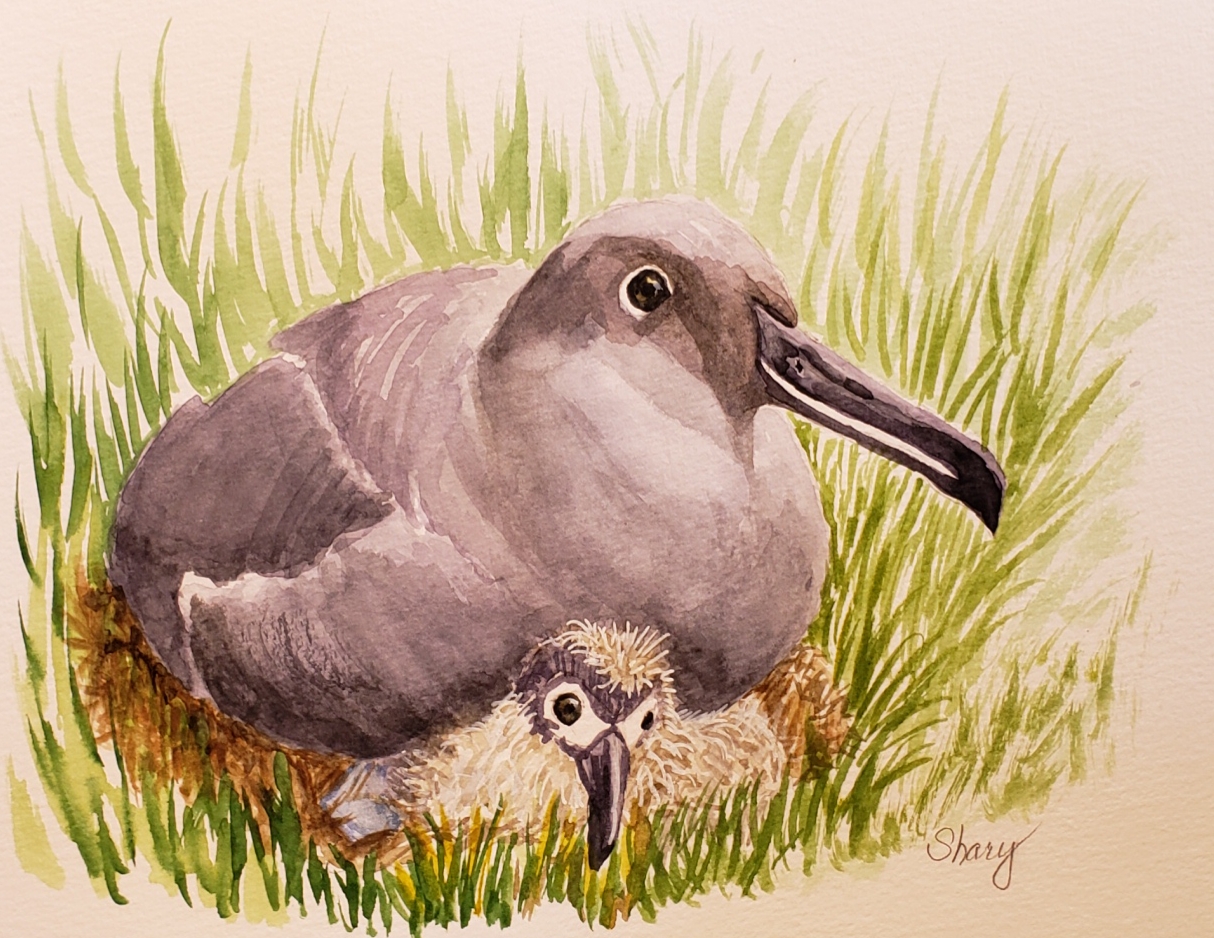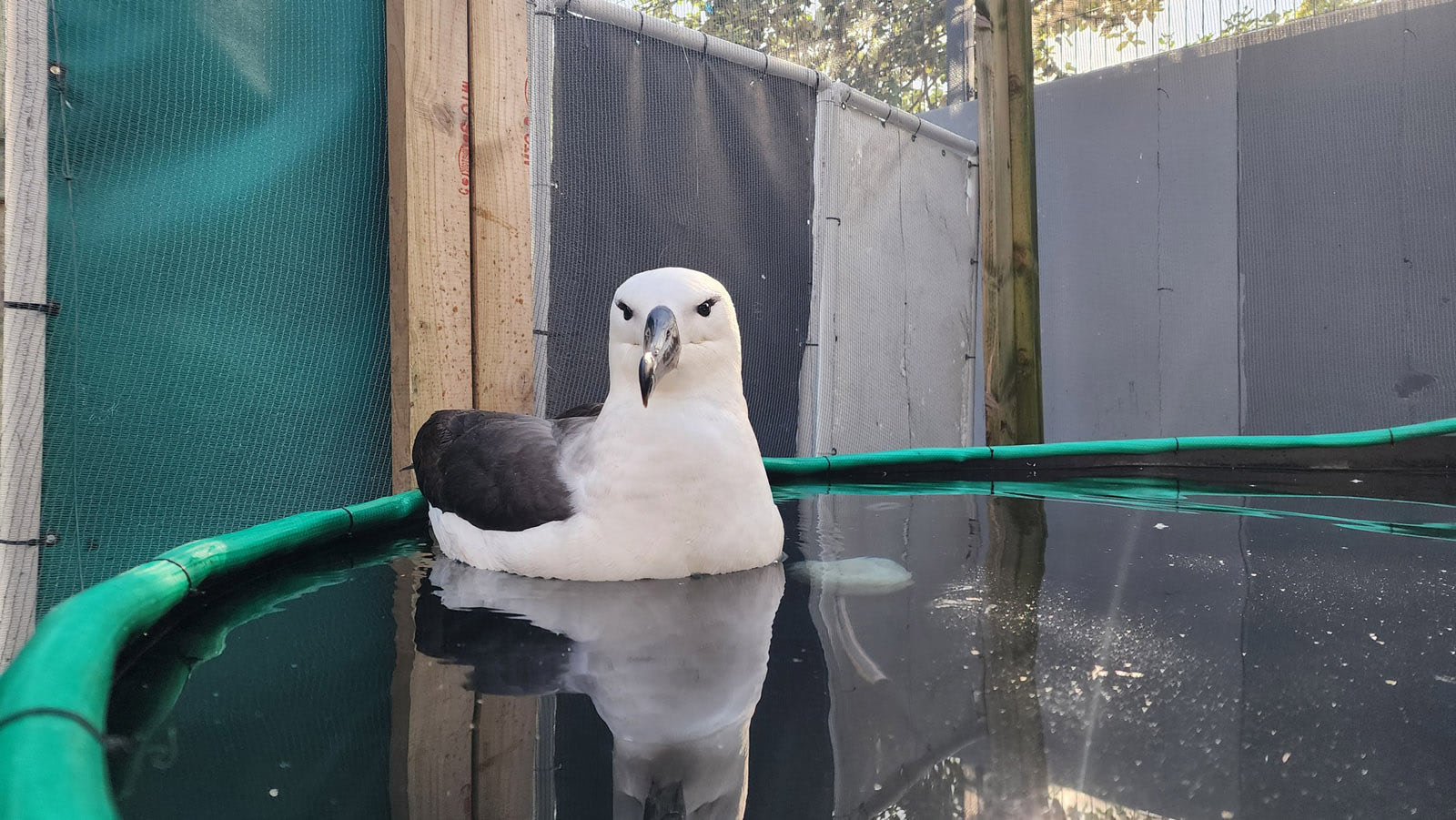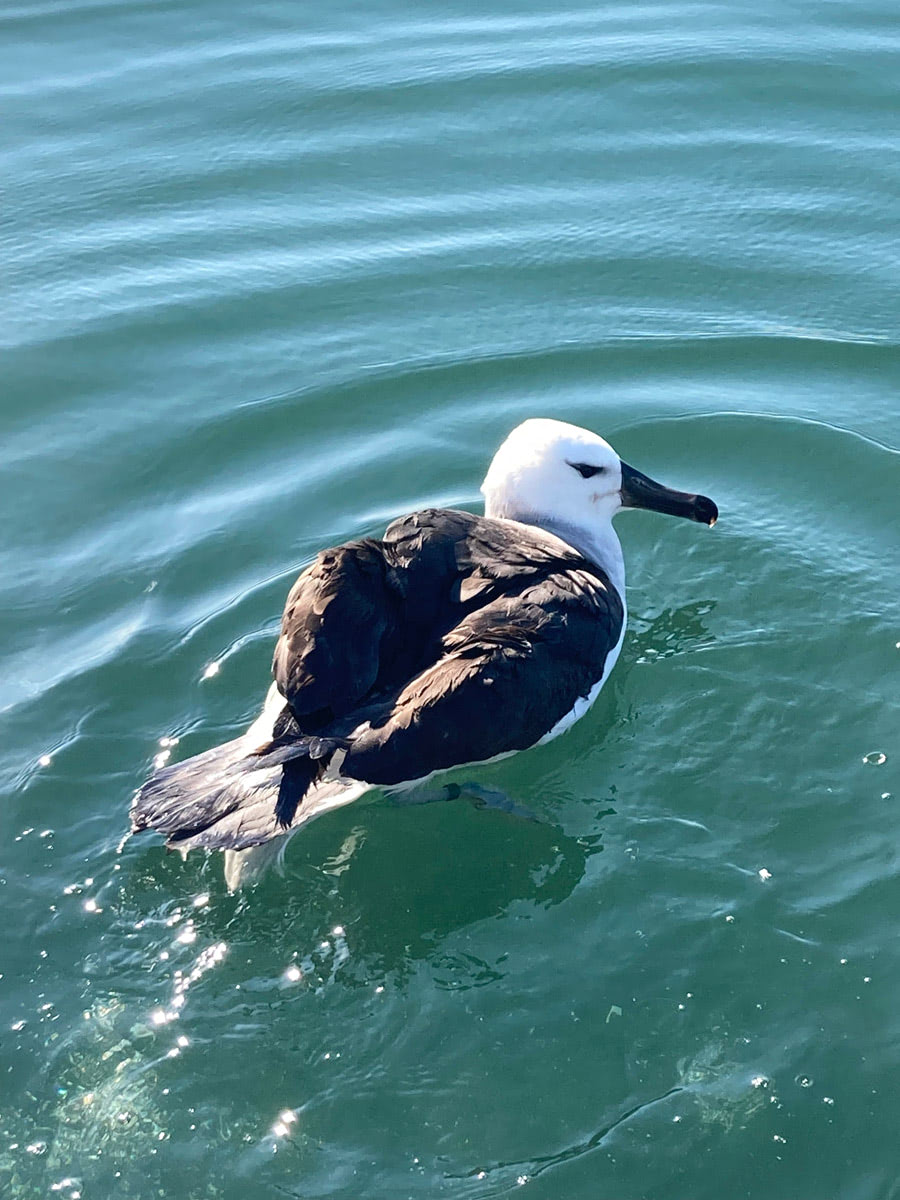
Traps equipped with SmartTrap technology await deployment next to a White-chinned Petrel artificial burrow on New Island
Vulnerable White-chinned Petrels Procellaria aequinoctialis breed in very small numbers on New Island in the Falkland Islands (Islas Malvinas)* as recently reported in ACAP Latest News. Prior to an attempt by the New Island Restoration Project (NIRP) to eradicate the island’s rodents and feral cats, efforts have been made to protect the colony by installing artificial burrows. Further on-site protection now comes from the use of SmartTrap technology (a biosecurity wireless monitoring system), as the NIRP reports on its Facebook page.
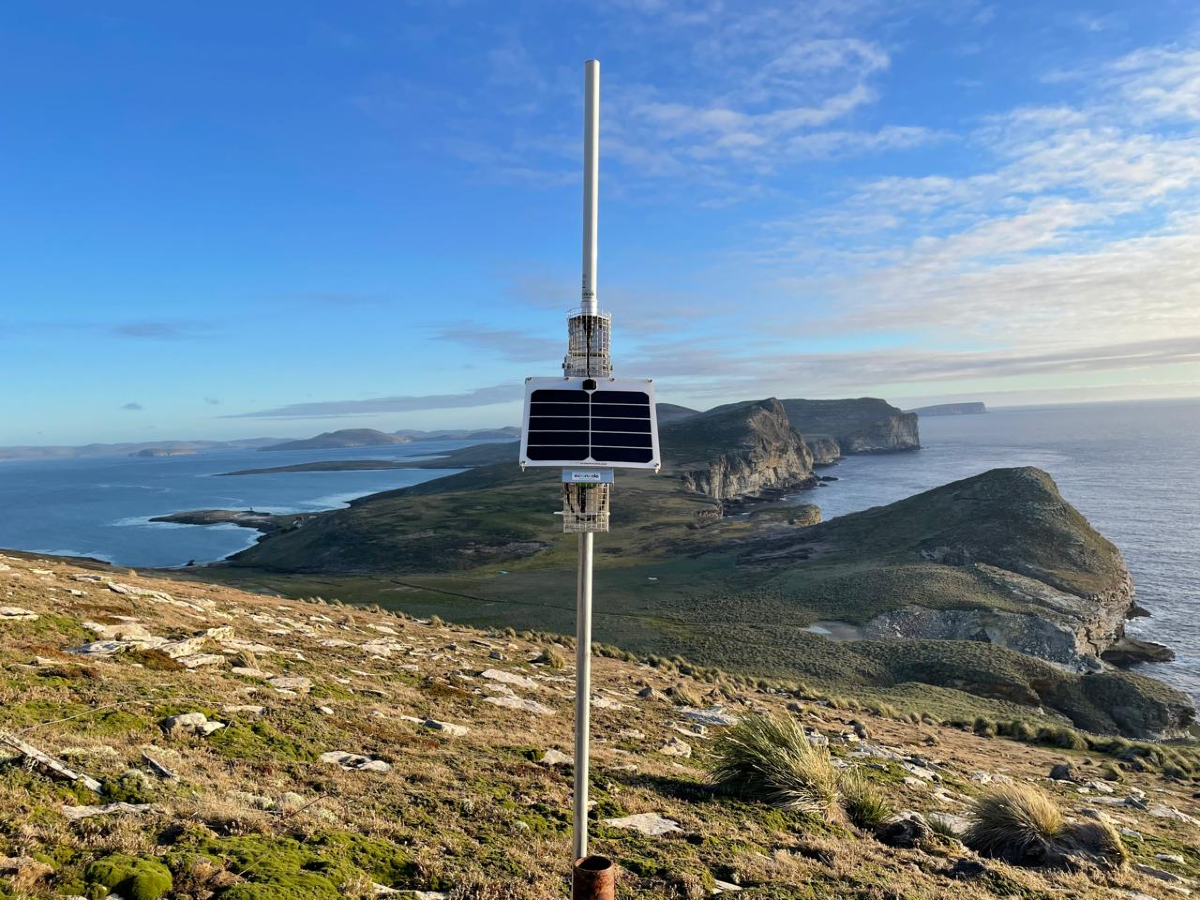
Sending a message: part of the ‘SmartTrap’ set up on New Island
“We've just installed brand-new ‘smart traps’ at the White-chinned Petrel colony here on New Island. These traps are a game-changer in our mission to protect this small and vulnerable colony, which is on the brink of local extinction and is threatened by predation from invasive mammals.
Equipped with advanced technology from Econode New Zealand, these traps send instant notifications when triggered, allowing us to respond quickly and efficiently. This will improve the chances of White-chinned Petrels successfully raising chicks through to fledging.
A huge thank you to Biodiversity Challenge Funds for funding the purchase of this equipment and supporting our efforts to conserve New Island's unique biodiversity.”
![P02[1:6] TT[666] E[119:0410]G[080:0x19] BV[61:5] IR[N:L:25] MOE[0:3] AL:[0:0]](/images/stories/acap/Birds/Petrels/W/White_chinned/Smart_traps_5.jpg)
After dark: a White-chinned Petrel at the mouth of its artificial burrow on New Island
Reference:
Reid, T., Lecoq, M, & Catry, P. 2007. The White-chinned Petrel Procellaria aequinoctialis population of the Falkland Islands. Marine Ornithology 35: 57-60.
John Cooper, Emeritus Information Officer, Agreement on the Conservation of Albatrosses and Petrels, 28 November 2024
*A dispute exists between the Governments of Argentina and the United Kingdom of Great Britain and Northern Ireland concerning sovereignty over the Falkland Islands (Islas Malvinas), South Georgia and the South Sandwich Islands (Islas Georgias del Sur y Islas Sandwich del Sur) and the surrounding maritime areas.

 English
English  Français
Français  Español
Español 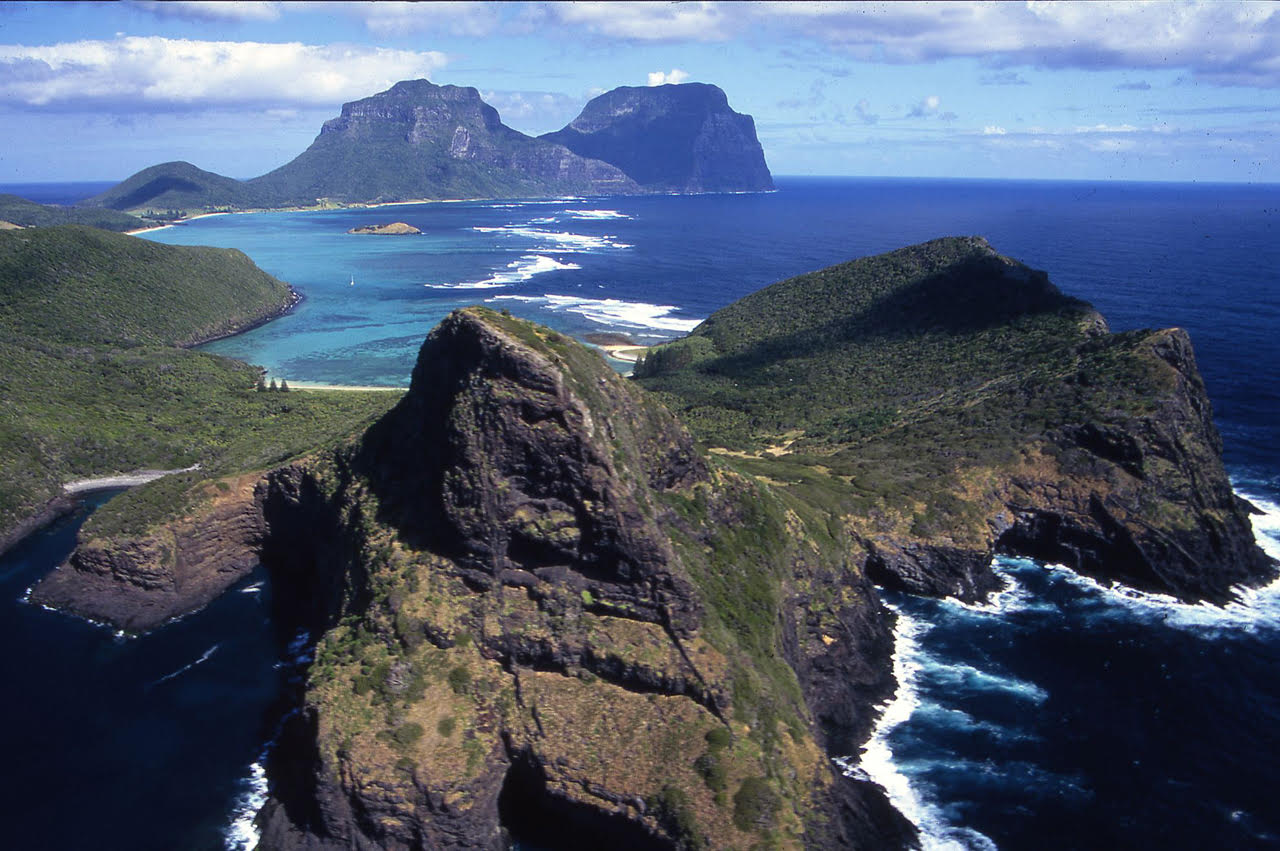 A view of Lord Howe Island, photograph by Ian Hutton
A view of Lord Howe Island, photograph by Ian Hutton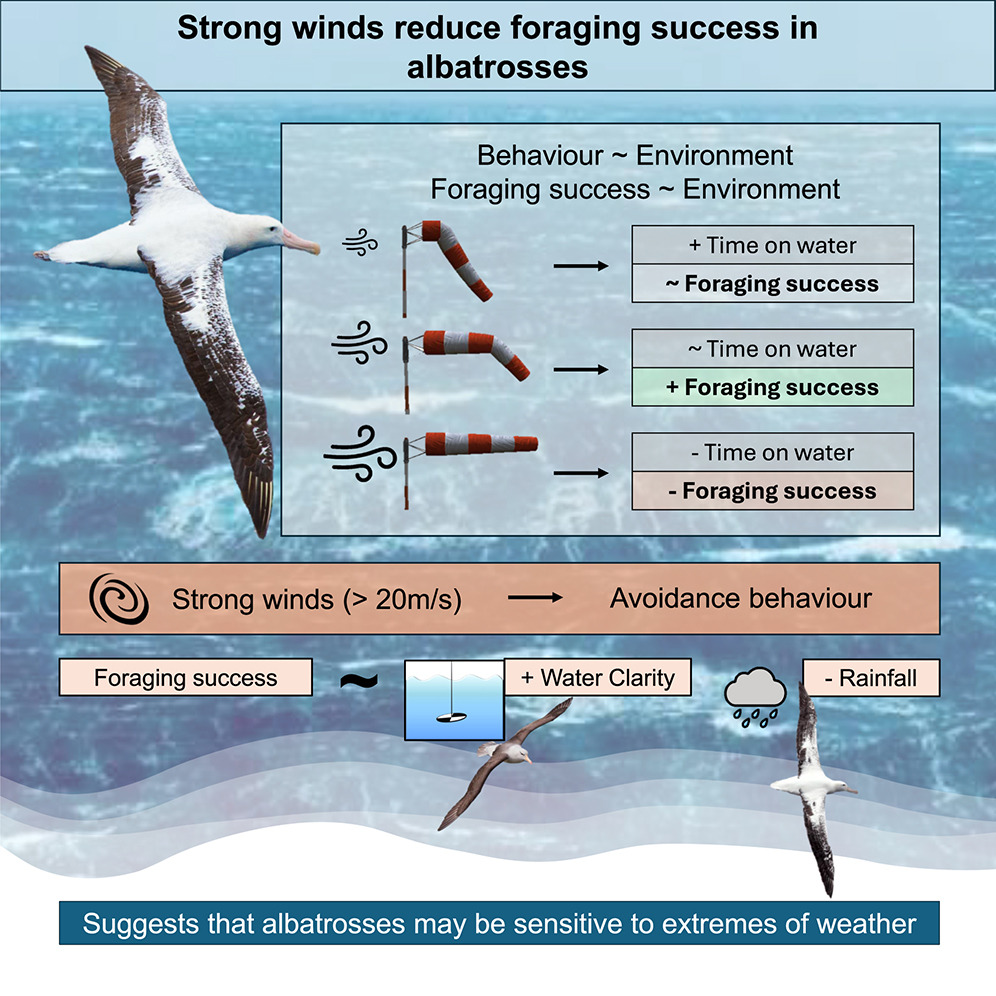 The graphical abstract from the paper.
The graphical abstract from the paper. 